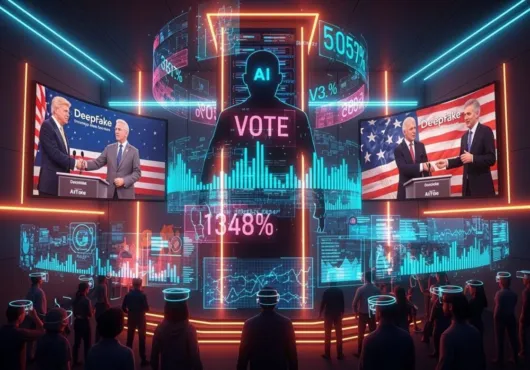AI is being rebranded as Captain Planet. Slick decks promise algorithms that sniff methane from orbit, tame the power grid, and micro-dose crops with just the right fertilizer. Nice fairy tale. But training a single GPT-scale model belches more CO₂ than flying New York → Sydney round-trip—first class. So, what is it: eco-savior or green-washed polluter?
- Hidden cost: Training big models spews serious CO₂.
- Efficiency rebound: Savings tempt us to consume more, erasing gains.
- No enforcement = no impact: AI that only measures the mess doesn’t clean it.
The Carbon Cost Nobody Likes to Mention
Big models guzzle electricity like a crypto farm on double-espresso. Researchers at UMass Amherst clocked a typical NLP training run at 284 t CO₂e—roughly five cars’ lifetime emissions. Cloud providers tout “100 % renewable,” yet when solar clocks out at dusk, the GPUs keep slurping electrons from coal-fired baseload. Until we count that tab up-front, AI’s climate halo is just neon-lit smog.
Grid Whisperer or Grid Glutton?
Yes, machine-learning forecasters can shave peak demand, auto-route surplus wind, and save utilities millions. But those same training cycles spike power use at 2 a.m.—exactly when renewables dip and gas peaker plants kick in. The industry’s favorite trick? Claim the gross savings, bury the net cost. Congrats: you optimized the grid by overloading it.
Supply-Chain Sorcery—Until the Rebound Hits
AI route-planners trimmed Amazon’s delivery miles by double digits. Victory lap! Cheaper shipping means impulse buys skyrocket, cardboard rivers overflow, and last-mile vans idle curbside again. Economists call it rebound; Silicon Valley calls it “growth.” Either way the emissions you shaved off just respawned wearing a different SKU.
Satellite Snitches & Sensor Swarms
Here’s where the hype has teeth. Ultra-resolution imagery + computer vision now spots flares, illegal logging, and micro-plastic plumes in hours, not months. The bottleneck? Humans. An NGO in Paris can tweet the leak, but somebody still has to hike into Siberia and close the valve—or raid the cartel bulldozing the rainforest.
Who Programs the Planetary Priorities?
Algorithms optimize what they’re told to measure. Ask the model to “maximize corn yield,” and it’ll happily drown Iowa in fertilizer while nitrous-oxide emissions spike off the chart it never saw. Climate solutions coded by corporations chase KPIs, not planetary boundaries. Garbage in, garbage planet out.
Bottom Line
AI can absolutely help decarbonize—if we:
Invoice its own footprint instead of hand-waving “cloud credits.”
Kill the rebound loop by pairing efficiency gains with hard caps on consumption.
Put teeth behind the insights—regulators who clamp the pipeline shut, not influencers live-tweeting the spill.
Otherwise it’s just another shiny Roomba cleaning one corner while the landfill grows somewhere off-screen.



